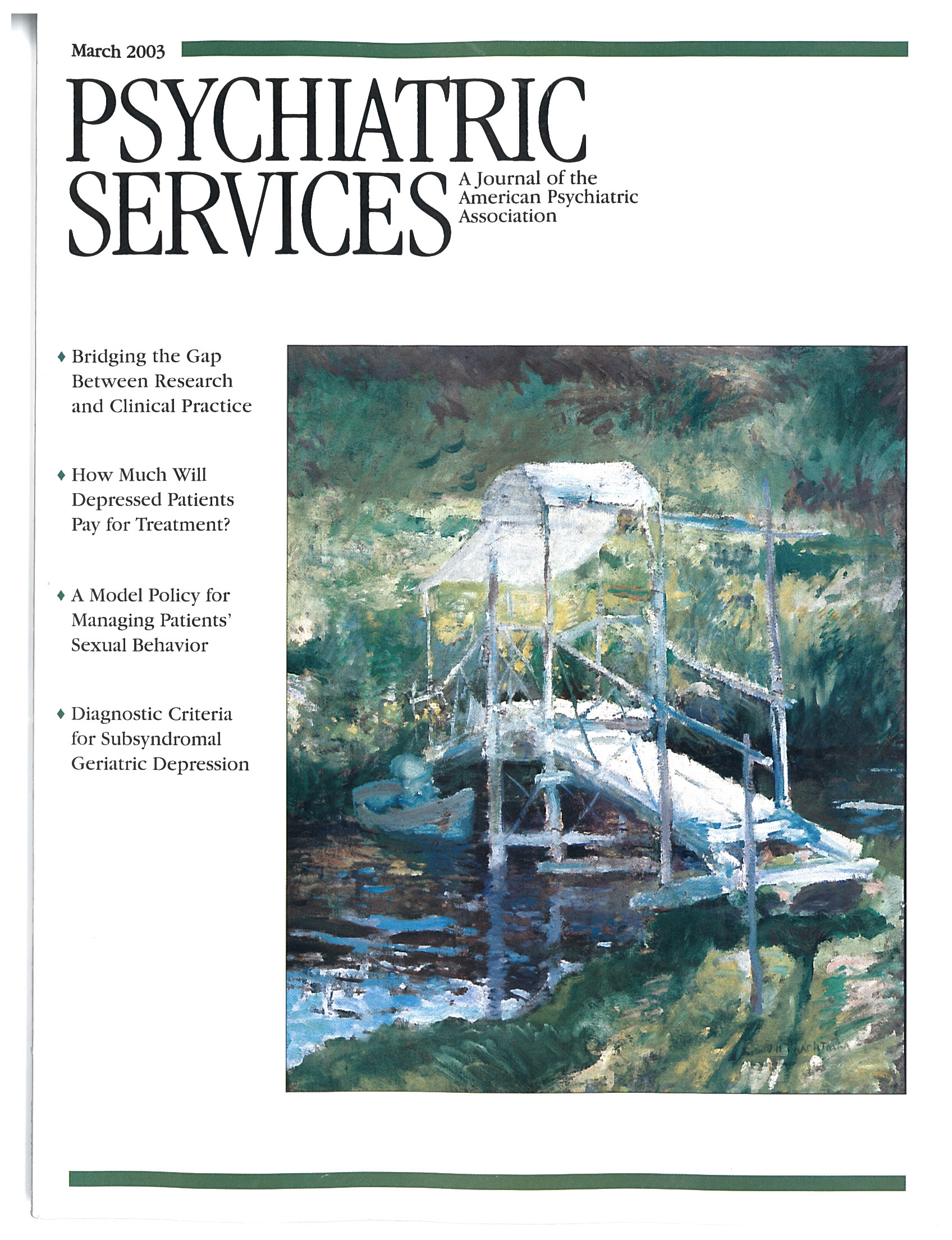This Month's Highlights
Bridging the Gap Between Research and Practice
The past few years have seen increased emphasis on translational research, which takes findings generated by randomized controlled trials—efficacy studies—and translates them into treatments for patients who are seen in nonresearch settings. Two articles in this issue of the journal describe approaches to the design of sound effectiveness research. Both describe hybrid models that retain essential features of efficacy research while expanding the research questions to address real-world issues, such as cost-effectiveness and diversity in treatment populations. In the first article, Peter P. Roy-Byrne, M.D., and his colleagues review the rationale for decisions they made in designing one of the first translational studies of the treatment of anxiety disorder in primary care (see page 327). Next, Kathleen M. Carroll, Ph.D., and Bruce J. Rounsaville, M.D., propose a hybrid model for enhancing the scientific yield of effectiveness research in substance abuse treatment (see page 333). In Taking Issue, Kenneth Minkoff, M.D., and Christie A. Cline, M.D., M.B.A., call on behavioral health researchers to learn how to build and organize systems that are capable of adopting innovative technologies in order to ensure the success of science-to-service initiatives (see page 275).
Willingness to Pay for Depression Care
A study conducted in Washington State found that when depressed primary care patients were asked how much they were willing to pay for a treatment that would relieve their symptoms, the amount they cited was more than the actual cost of treatment. In a study of more than 600 patients, Jürgen Unützer, M.D., M.P.H., and his colleagues used a method that health economists employ to assess the value of a treatment to consumers. They asked patients in a staff-model health maintenance organization to assume that they had no insurance and to state how much they would be willing to pay each month for a six-month treatment that would completely eliminate their symptoms of depression. At baseline the mean amount they were willing to pay was $270 per month. Those with higher incomes and with more severe symptoms were willing to pay up to $332 per month. The treatment that was actually provided to the patients cost $120 per month (see page 340).
Emergency Services and the System of Care
Admissions to psychiatric emergency services have been cited as a way to gauge the performance of a mental health system, but few empirical studies have stepped back for a longitudinal look at a large system of care. Ralph Catalano, Ph.D., and his associates examined nearly 30,000 inpatient admissions over three and a half years among patients who visited psychiatric emergency services operated by the San Francisco Department of Public Health. Certain events and enhancements in the broader system of care, such as the introduction of a mobile crisis clinic and case management, had predicted effects on weekly inpatient admissions for some patient groups. However, some aspects of the study results suggest that systems of care are more plastic than hydraulic and may be more difficult to manage than previous studies have indicated (see page 351).
Subsyndromal Geriatric Depression
In the Practical Geriatrics column, Helen Lavretsky, M.D., and Anand Kumar, M.D., focus on clinically significant geriatric depression that does not meet established criteria for major depressive disorder. They present phenomenologic and therapeutic evidence for subtypes of this depression category and examine the prevalence of subsyndromal depression in the community and in specialized treatment settings. Its effects on elderly persons with neurodegenerative disorders such as Alzheimer's disease are discussed, and treatment studies are reviewed. Following the DSM model, the authors propose formal diagnostic criteria for clinically significant nonmajor depression (see page 297).
Briefly Noted…
• The literature on managing the sexual behavior of inpatients on adult acute care units is reviewed, and a model policy is presented (see page 346).
• The State Mental Health Policy column describes events in New Mexico that illustrate the need to establish formal procedures for ensuring public input into the Medicaid waiver renewal process (see page 289).
• In the Multimedia Reviews column, the effects of information overload in the post-McLuhan era are examined (see page 311).
• The book review section highlights a book that takes a new and somewhat skeptical look at combat-induced stress—variously called shell shock, war neurosis, battle fatigue, and PTSD (see page 405).



